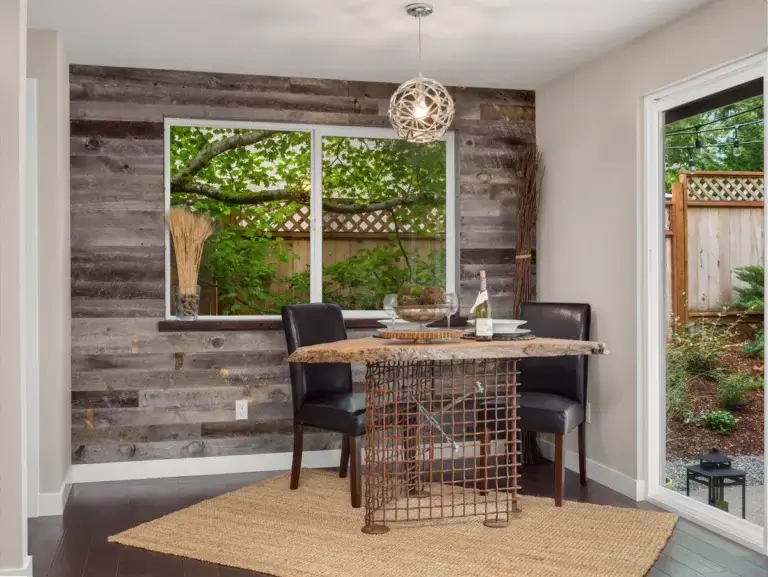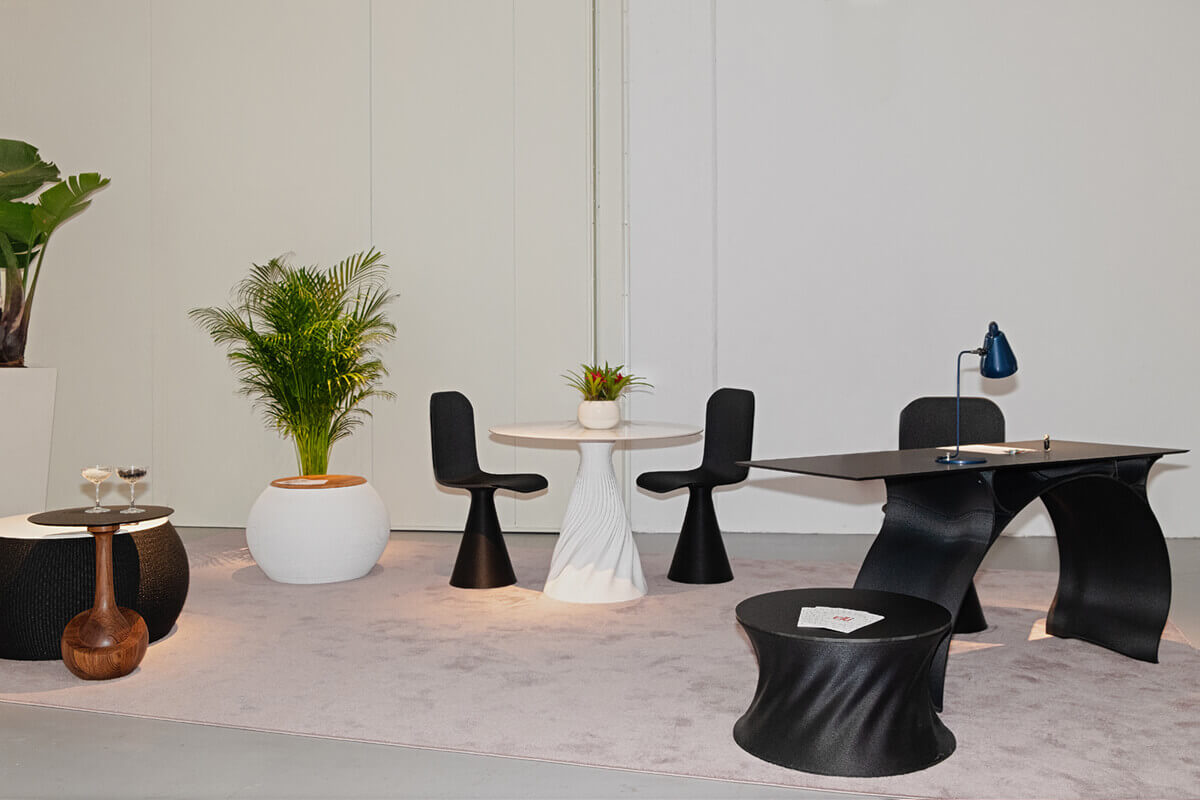The Rise of Zero-Impact Furniture in Eco-Friendly Design

In an era where sustainability is at the forefront of design innovation, zero-impact furniture emerges as a beacon of eco-friendly solutions. This revolutionary approach not only transforms our living spaces but also contributes to a healthier planet. Let’s delve into the world of Zero-Impact Furniture, exploring its principles, benefits, and how it’s shaping the future of interior design.
Understanding Zero-Impact Furniture
Zero-Impact Furniture goes beyond aesthetics; it embodies a commitment to environmental responsibility. The term “zero-impact” refers to the minimal ecological footprint left behind during the production, use, and disposal of furniture. This concept revolves around sustainable materials, eco-conscious manufacturing processes, and designs that prioritize longevity and recyclability.
Materials Matter: Sustainable Sourcing
The heart of zero-impact furniture lies in the materials used. Manufacturers are increasingly opting for sustainable resources such as bamboo, reclaimed wood, and recycled metals. These materials not only reduce deforestation but also minimize the carbon footprint associated with traditional furniture production.

This trend often incorporates innovative materials like recycled plastic, turning waste into functional and aesthetically pleasing pieces. By prioritizing sustainable sourcing, these furnishings aim to leave zero negative impacts on ecosystems and natural resources.
Eco-Conscious Manufacturing
Zero-impact furniture takes a stand against harmful manufacturing practices. Many manufacturers in this space prioritize energy-efficient processes, reduce water consumption, and employ eco-friendly adhesives and finishes. By adopting these sustainable practices, the industry aims to decrease pollution and conserve resources while still delivering high-quality, stylish furniture.
In the world of zero-impact furniture, it’s not just about the end product—it’s about the journey of creation and the responsibility manufacturers bear toward the environment.
Longevity and Timeless Design
One of the key principles of this trend is designing pieces that stand the test of time. These furnishings aren’t just fashionable; they’re crafted with durability in mind. By investing in quality materials and timeless designs, the industry encourages consumers to view furniture as a long-term investment rather than a disposable commodity.
The longevity aspect is crucial in reducing the overall environmental impact. When furniture lasts for decades, it minimizes the need for constant replacements, ultimately curbing the demand for new resources and reducing waste.
Recyclability and Circular Economy
Zero-impact furniture embraces the idea of a circular economy, where products are designed to be easily disassembled and recycled. These designs prioritize components that can be separated and repurposed, ensuring that when the time comes for disposal, minimal waste ends up in landfills.
Manufacturers are actively engaging in take-back programs, allowing consumers to return furniture at the end of its lifecycle. This not only encourages responsible disposal but also provides an avenue for repurposing materials in the creation of new pieces, closing the loop on waste.
Benefits Beyond the Home
Embracing zero-impact furniture extends benefits beyond individual households. As the demand for sustainable practices grows, manufacturers are driven to adopt eco-friendly methods, influencing the industry as a whole. The ripple effect of this movement contributes to a more sustainable future, encouraging other sectors to reevaluate their environmental impact.

Conclusion: A Greener Tomorrow with Zero-Impact Furniture
In the pursuit of a greener tomorrow, zero-impact furniture stands as a beacon of hope. Through sustainable materials, eco-conscious manufacturing, and a commitment to longevity, this innovative approach is reshaping the landscape of interior design. As consumers become increasingly aware of their ecological footprint, the demand for zero-impact furniture is likely to soar, pushing the industry to embrace more sustainable practices.
Incorporating these eco-friendly pieces into our homes not only enhances our living spaces but also makes a positive impact on the planet. As we navigate the future, let’s celebrate the marriage of design and sustainability, embracing sustainable furniture as a testament to responsible living.
“It is only through the union of craftsmanship and technology that we are able to give solutions for a better earth.”
-Elli Design Furniture-
In an era where sustainability is at the forefront of design innovation, zero-impact furniture emerges as a beacon of eco-friendly solutions. This revolutionary approach not only transforms our living spaces but also contributes to a healthier planet. Let’s delve into the world of Zero-Impact Furniture, exploring its principles, benefits, and how it’s shaping the future of interior design.
Understanding Zero-Impact Furniture
Zero-Impact Furniture goes beyond aesthetics; it embodies a commitment to environmental responsibility. The term “zero-impact” refers to the minimal ecological footprint left behind during the production, use, and disposal of furniture. This concept revolves around sustainable materials, eco-conscious manufacturing processes, and designs that prioritize longevity and recyclability.
Materials Matter: Sustainable Sourcing
The heart of zero-impact furniture lies in the materials used. Manufacturers are increasingly opting for sustainable resources such as bamboo, reclaimed wood, and recycled metals. These materials not only reduce deforestation but also minimize the carbon footprint associated with traditional furniture production.

This trend often incorporates innovative materials like recycled plastic, turning waste into functional and aesthetically pleasing pieces. By prioritizing sustainable sourcing, these furnishings aim to leave zero negative impacts on ecosystems and natural resources.
Eco-Conscious Manufacturing
Zero-impact furniture takes a stand against harmful manufacturing practices. Many manufacturers in this space prioritize energy-efficient processes, reduce water consumption, and employ eco-friendly adhesives and finishes. By adopting these sustainable practices, the industry aims to decrease pollution and conserve resources while still delivering high-quality, stylish furniture.
In the world of zero-impact furniture, it’s not just about the end product—it’s about the journey of creation and the responsibility manufacturers bear toward the environment.
Longevity and Timeless Design
One of the key principles of this trend is designing pieces that stand the test of time. These furnishings aren’t just fashionable; they’re crafted with durability in mind. By investing in quality materials and timeless designs, the industry encourages consumers to view furniture as a long-term investment rather than a disposable commodity.
The longevity aspect is crucial in reducing the overall environmental impact. When furniture lasts for decades, it minimizes the need for constant replacements, ultimately curbing the demand for new resources and reducing waste.
Recyclability and Circular Economy
Zero-impact furniture embraces the idea of a circular economy, where products are designed to be easily disassembled and recycled. These designs prioritize components that can be separated and repurposed, ensuring that when the time comes for disposal, minimal waste ends up in landfills.
Manufacturers are actively engaging in take-back programs, allowing consumers to return furniture at the end of its lifecycle. This not only encourages responsible disposal but also provides an avenue for repurposing materials in the creation of new pieces, closing the loop on waste.
Benefits Beyond the Home
Embracing zero-impact furniture extends benefits beyond individual households. As the demand for sustainable practices grows, manufacturers are driven to adopt eco-friendly methods, influencing the industry as a whole. The ripple effect of this movement contributes to a more sustainable future, encouraging other sectors to reevaluate their environmental impact.

Conclusion: A Greener Tomorrow with Zero-Impact Furniture
In the pursuit of a greener tomorrow, zero-impact furniture stands as a beacon of hope. Through sustainable materials, eco-conscious manufacturing, and a commitment to longevity, this innovative approach is reshaping the landscape of interior design. As consumers become increasingly aware of their ecological footprint, the demand for zero-impact furniture is likely to soar, pushing the industry to embrace more sustainable practices.
Incorporating these eco-friendly pieces into our homes not only enhances our living spaces but also makes a positive impact on the planet. As we navigate the future, let’s celebrate the marriage of design and sustainability, embracing sustainable furniture as a testament to responsible living.
“It is only through the union of craftsmanship and technology that we are able to give solutions for a better earth.”
-Elli Design Furniture-







